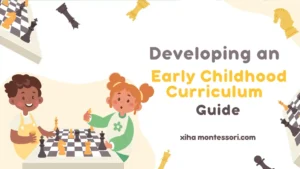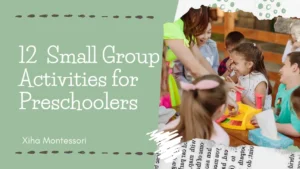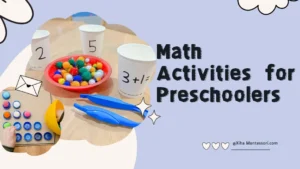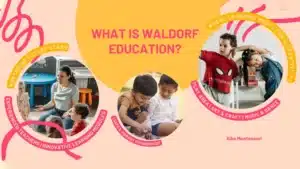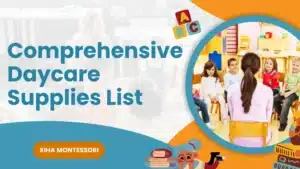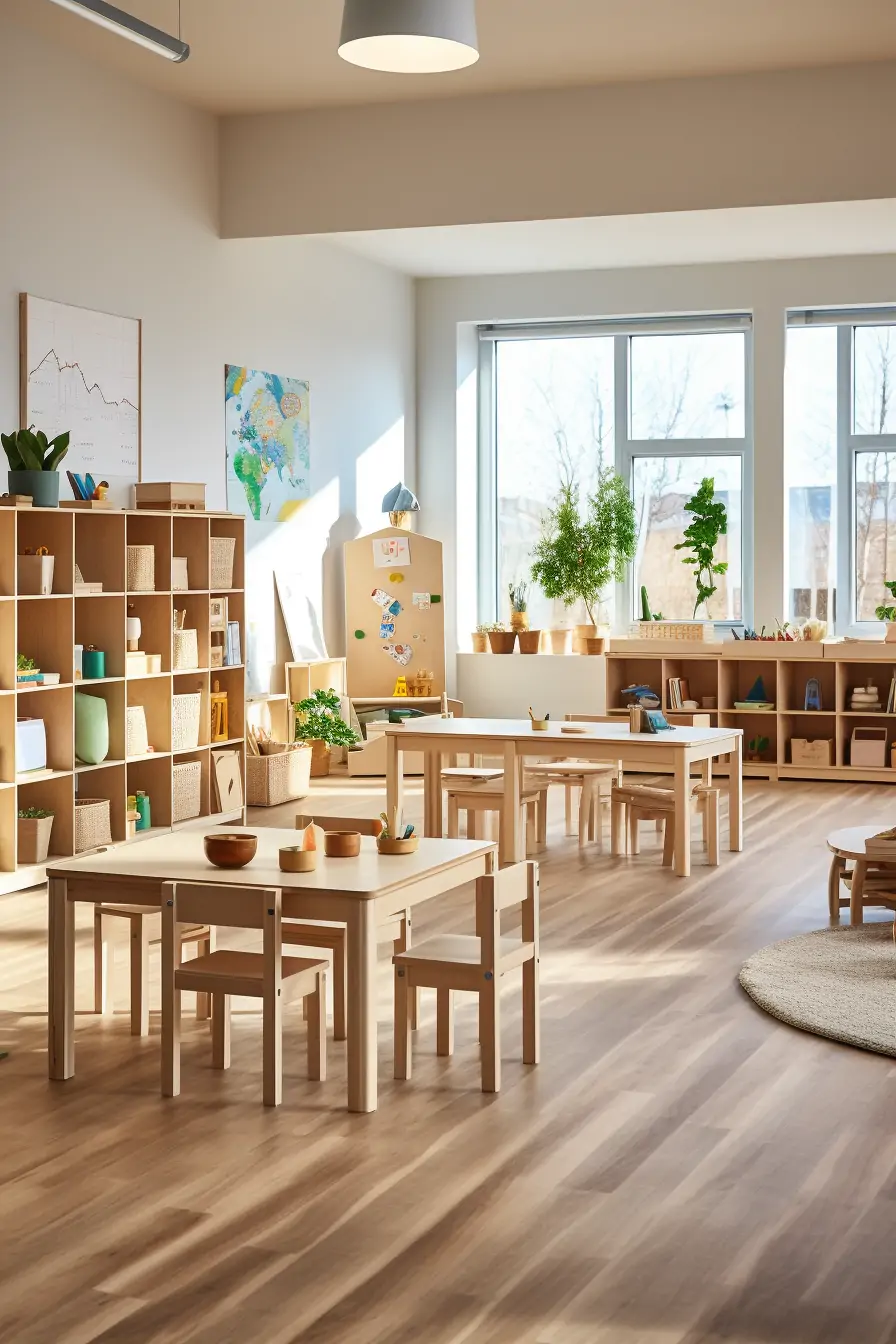Are you a preschool teacher or parent looking to create a magical and immersive learning environment for little ones? Look no further! This ultimate guide will help you choose the perfect preschool classroom themes that sparks curiosity, fosters creativity, and enhances early childhood development.
Preschool classroom themes can greatly impact the effectiveness of instruction and the overall learning experience for students. Ideal themes should be visually appealing to children, promote educational concepts, and accommodate a variety of activities and lessons. Themes such as “Under the Sea,” “Space Exploration,” and “Around the World” are perfect for inspiring curiosity and encouraging learning through exploration and play.
The right themes can transform an ordinary classroom into a captivating wonderland. But with so many options available, how do you make the right choice?
All are met in this post as we guide you through the process of choosing a preschool classroom themes that meets your teaching goals, engages young minds, and creates a nurturing environment. We’ll explore popular themes, discuss how to incorporate them effectively, and offer tips for bringing your chosen themes to life through decorations, activities, and lesson plans.
What Is a Preschool Classroom Themes?
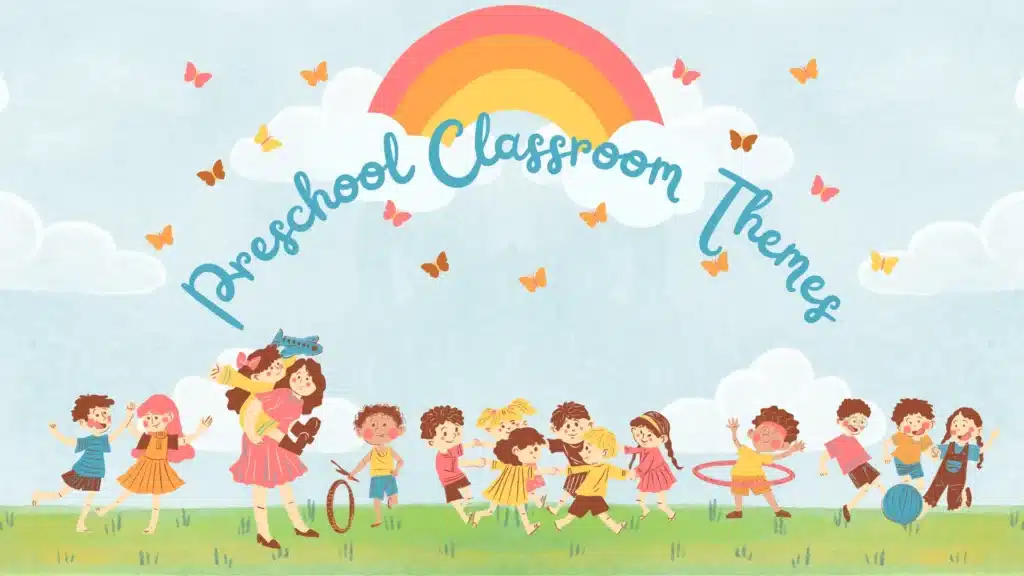
A preschool classroom themes is a unifying concept or idea that sets the tone for the learning environment. It involves creating a cohesive and immersive experience that engages children’s senses, sparks their curiosity, and promotes meaningful learning.
A preschool classroom themes is more than just decoration. It provides a framework for organizing activities, materials, and experiences that align with the chosen concept. It creates a visually appealing and stimulating preschool classroom environment that supports children’s development in all areas.
Themes can be based on a wide range of topics such as nature, animals, transportation, or even abstract concepts like colors or shapes. The key is to choose a themes that resonates with teachers and students to create an environment where imagination flourishes and learning thrives.
Benefits of Decorating a Preschool Classroom Themes
Having a well-designed preschool classroom themes has many benefits for both teachers and students. Let’s explore some of the advantages:
1.Increased engagement:
A great preschool classroom themes captures children’s attention and encourages them to actively participate in learning activities. They are more likely to participate and retain information when the environment reflects their interests and stimulates their curiosity.
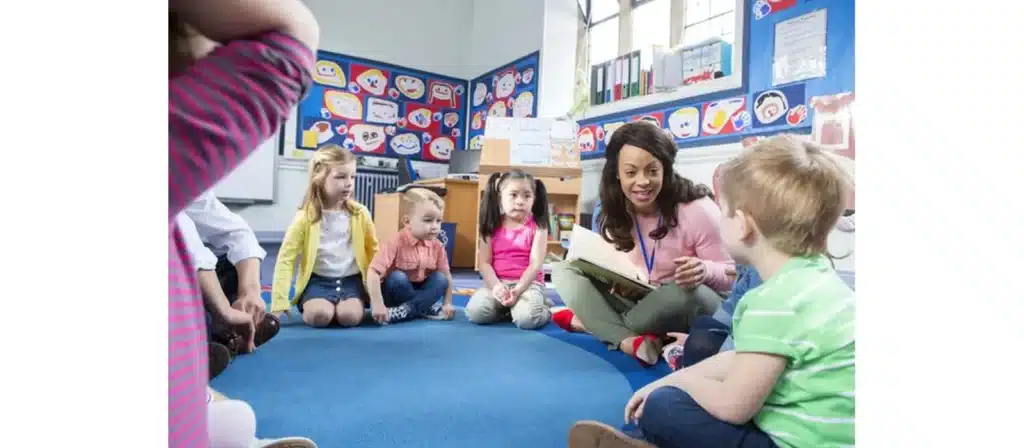
2.Enhanced Learning Experience:
Decorative themes create a cohesive and immersive learning experience for children. It helps them make connections between different concepts, facilitates cross-curricular learning, and promotes deeper understanding of the topic.
3.Positive Emotional Impact:
A visually appealing and stimulating environment can have a positive impact on children’s emotional well-being. It creates a sense of belonging, comfort and security, which in turn enhances their overall learning experience.
4.Foster a sense of community:
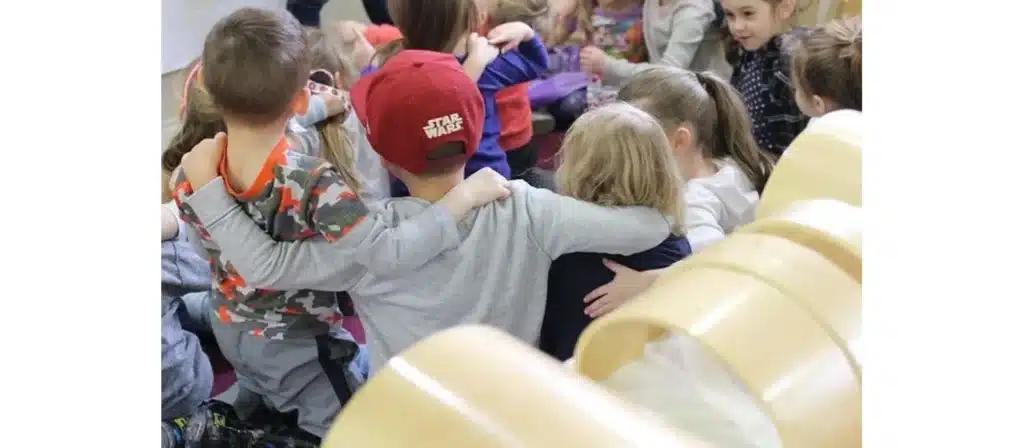
A common themes can help create a cohesive classroom community where students work together to achieve common learning goals.
By designing a preschool classroom themes, you can create an environment that supports children’s development, inspires a love of learning, and exposes children to a variety of activities that fit different learning styles.
Preschool classroom themes considerations
Several factors come into play when deciding on a preschool classroom themes. These considerations ensure that the themes chosen not only appeals to the aesthetic senses, but also enriches the educational experience.
- Relevance to Educational Goals:
The primary consideration should always be the consistency of the themes with the educational objectives. Themes such as “Space Exploration” or “Under the Sea” offer plenty of opportunities to introduce scientific concepts, while “Around the World” fosters cultural awareness and diversity. - Age Appropriateness:
The classroom themes must resonate with the preschool age group. It should be simple enough to understand, but interesting enough to stimulate curiosity. An overly complex themes may confuse younger children, while an overly simple themes may not appeal to older preschoolers. - Adaptability:
Preschool classroom themes should be adaptable to different subjects, from literacy and numeracy to art and science. This flexibility allows teachers to create a cohesive learning experience that integrates the themes into all areas of the curriculum. - Safety and accessibility:
Themes should be implemented in a way that is safe and accessible to all students. Decorations and activities need to be age appropriate, safe, and accessible to preschoolers. - Availability of resources:
Consider the availability of resources and materials related to your chosen themes. Make sure you have access to books, props, art supplies, and other resources that effectively support your themes.
By considering these factors, you can make informed decisions that meet your instructional goals and create an engaging learning environment for your students.
Popular preschool classroom themes
Preschool classroom themes can vary widely depending on individual preferences and teaching goals. Here are some popular themes that have proven to be successful in many preschool settings:
1. All about my classroom themes
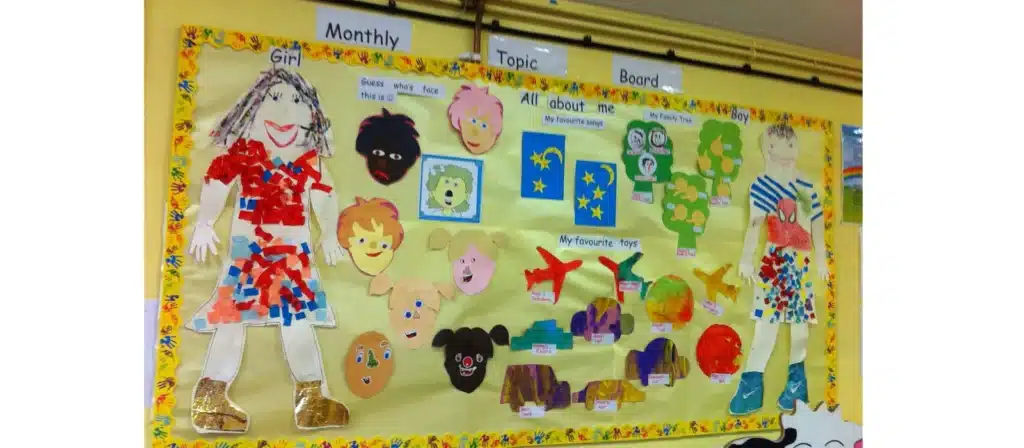
This preschool classroom themes is perfect for children entering school, a way for those who don’t know each other to get to know each other better. Sharing their hobbies, personalities, experiences, etc.. With this themes, children can showcase their special and unique personalities.
2. Bugs and Insects Classroom Themes
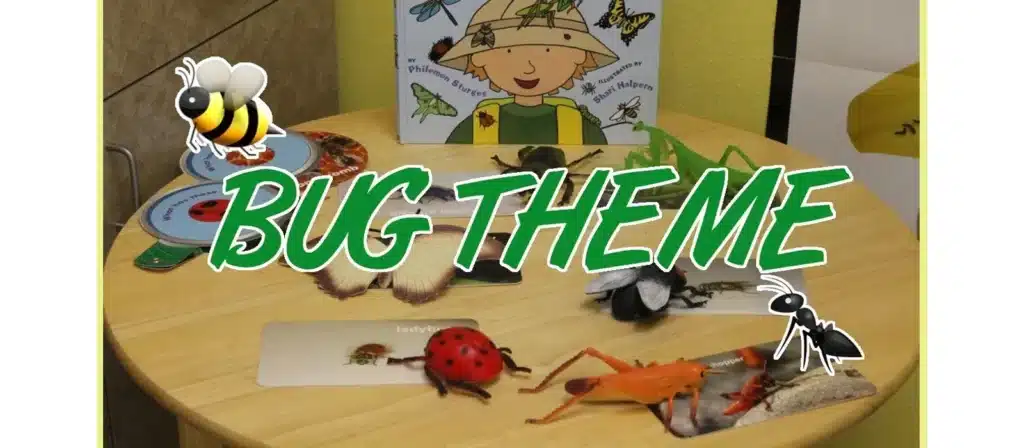
Dive into the small world of bugs and insects with this themes that transforms classrooms into humming habitats for exploration and discovery. This themes is perfect for introducing preschoolers to concepts of biology, life cycles, and the environment. Activities can range from observing live insects and making insect models to understanding their role in the ecosystem.
Incorporating literature is also a key component, with books like “The Very Hungry Caterpillar” serving as gateways to discussions about growth, change, and nutrition. Math and literacy skills are naturally integrated, with counting games based on legs and wings, and storytelling sessions that ignite imagination and vocabulary development. The Bugs and Insects Themes is a vibrant, hands-on way to explore the natural world, making every day an adventure in learning.
3. Earth Day Classroom Themes
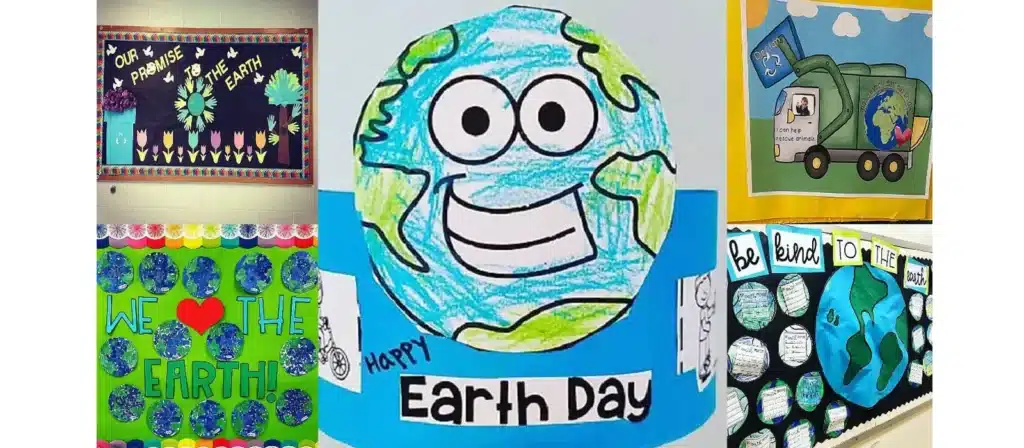
Celebrating Earth Day every day, this themes instills a sense of environmental responsibility and love for our planet. Through activities focused on recycling, conservation, and the beauty of nature, children learn the importance of taking care of the Earth. This preschool classroom themes offers endless opportunities for outdoor learning, from planting gardens to nature walks, where children can connect with the environment firsthand.
Inside the classroom, the Earth Day themes is brought to life through art projects using recycled materials, storytelling that highlights the Earth’s wonders and challenges, and science experiments that demonstrate simple ways to conserve resources. It’s a themes that not only educates but also empowers preschoolers to believe that even the smallest hands can make a big difference in the world.
4. Fire Safety Classroom Themes
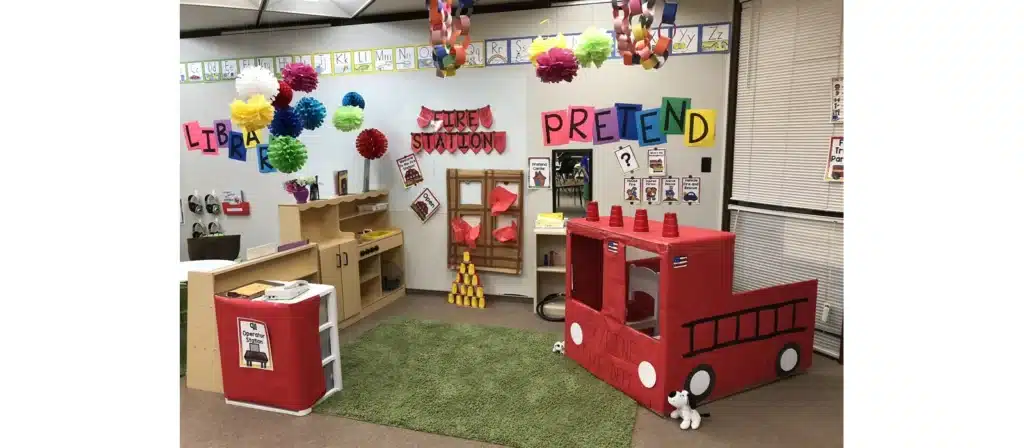
The fire safety themes teaches children important lessons about emergency preparedness, prevention and the role of firefighters in our community. Learn what to do in an emergency through a combination of storytelling, role-playing and practical safety drills. This themes is a great opportunity to invite local firefighters to visit your classroom to make the learning experience even more impactful.
Educational activities can include developing an escape plan, learning to stop, drop and roll, and understanding fire science. This is a classroom themes that combines life-saving knowledge with respect for those who keep us safe and fosters a sense of community and responsibility.
5. Music and Movement Classroom Themes
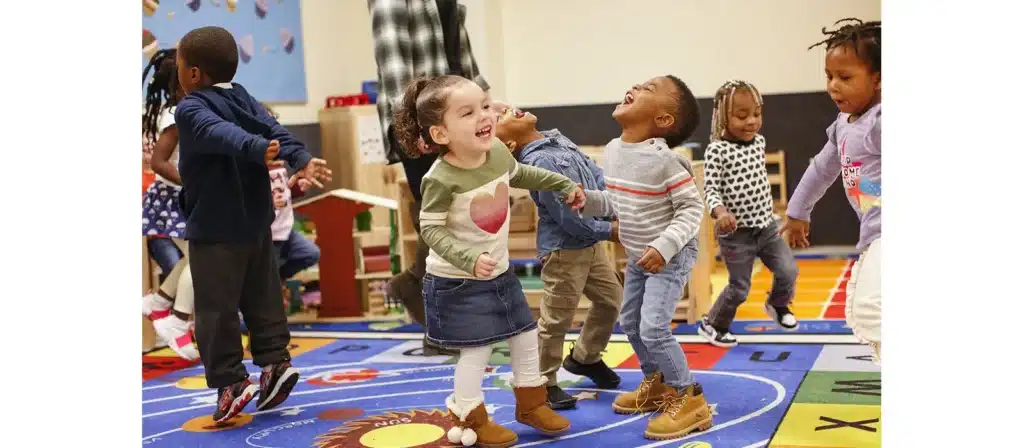
Music and Movement themes are all about expression, rhythm, and the joy of sound. This themes encourages children to explore music from different cultures, experiment with instruments, and express themselves through dance and movement. It’s a fantastic way to develop motor skills, enhance listening abilities, and introduce basic musical concepts in a fun, engaging way.
From sing-alongs to simple composition activities, the Music and Movement classroom themes is a celebration of sound that resonates with children of all ages. It also offers a unique way to integrate math through rhythm counting and literacy through song lyrics, proving that education can indeed be a joyful noise.
6. Camping Classroom Themes
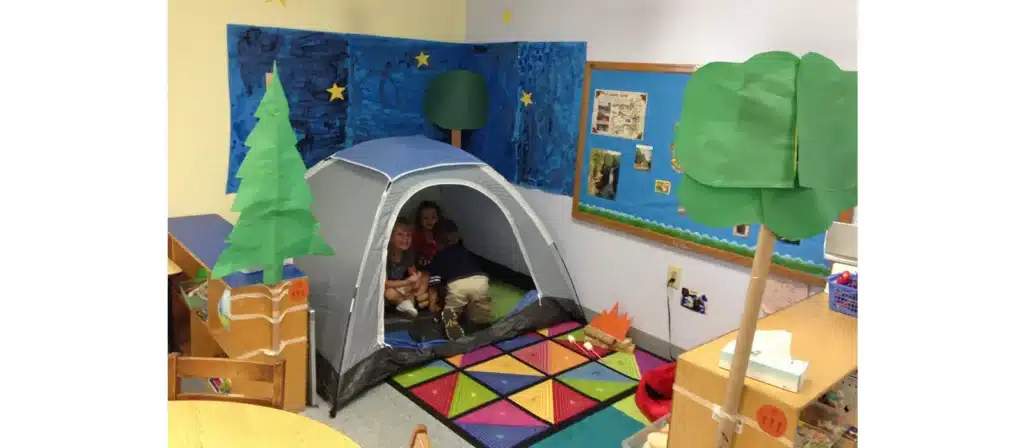
Transform your classroom into a campground where every day is an adventure in the great outdoors. The Camping themes is perfect for teaching about wildlife, stars, survival skills, and the joy of nature. It fosters teamwork through collaborative activities like setting up a tent or navigating with simple maps and encourages problem-solving and critical thinking through themed challenges.
7. Jungle Classroom Themes
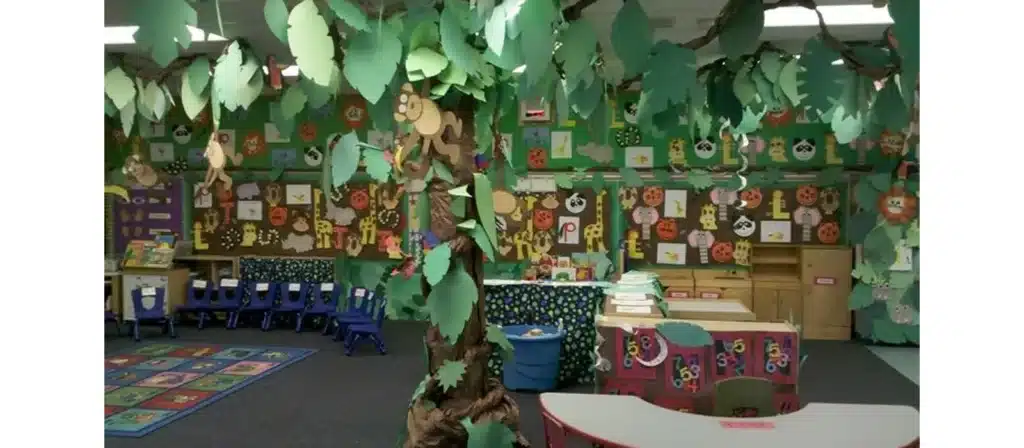
Step into the wild with a Jungle Classroom themes, where every day is a journey through lush landscapes and exotic animals. This themes allows children to explore biodiversity, ecosystems, and the importance of conservation through a captivating lens. Activities can include jungle safaris, animal studies, and storytelling that transports children to a world of adventure and discovery.
The Jungle themes is also an excellent backdrop for lessons on geography, environmental science, and global cultures, making it a comprehensive educational experience that is as informative as it is thrilling.
8. Farmhouse Classroom Themes
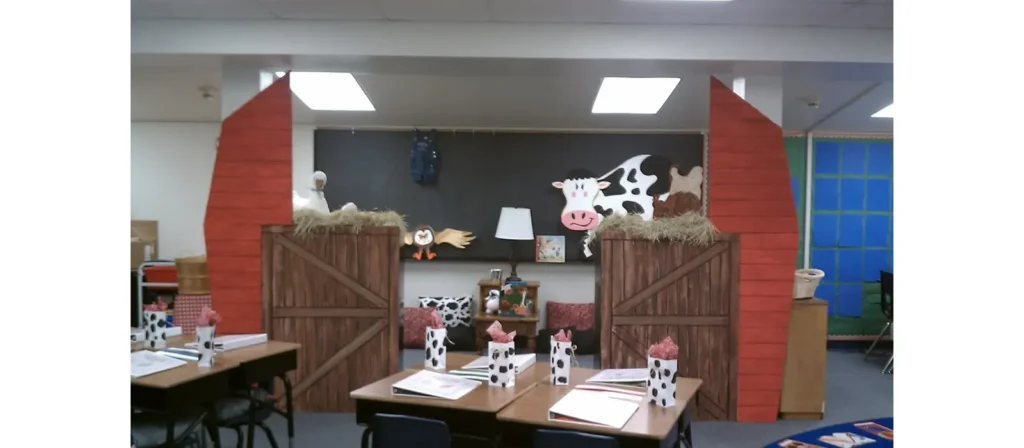
The Farmhouse Themes brings the heartwarming simplicity and hardworking spirit of farm life into the classroom. It teaches children about where food comes from, the seasons, and the importance of agriculture in our daily lives. Through hands-on activities like planting seeds, studying farm animals, and exploring farm machinery, children gain a deeper understanding of the natural world and the interconnectedness of ecosystems.
9. Space Classroom Themes
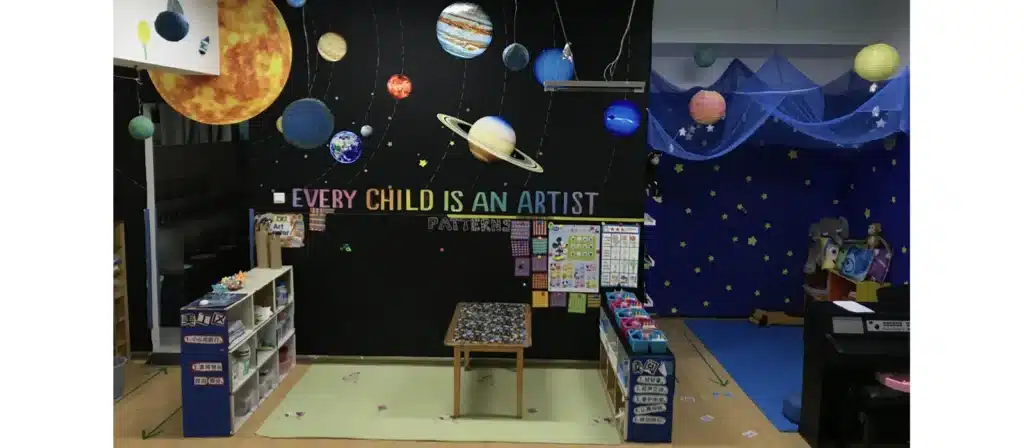
Embarking on a journey through the cosmos, the Space preschool classroom themes turns the classroom into an interstellar playground. This themes not only captivates young astronauts with the wonders of planets, stars, and galaxies but also introduces them to basic astronomical concepts and the spirit of exploration. Activities can include building model rockets, star gazing through makeshift telescopes, and learning about the solar system through interactive games.
10. Donut Classroom Themes
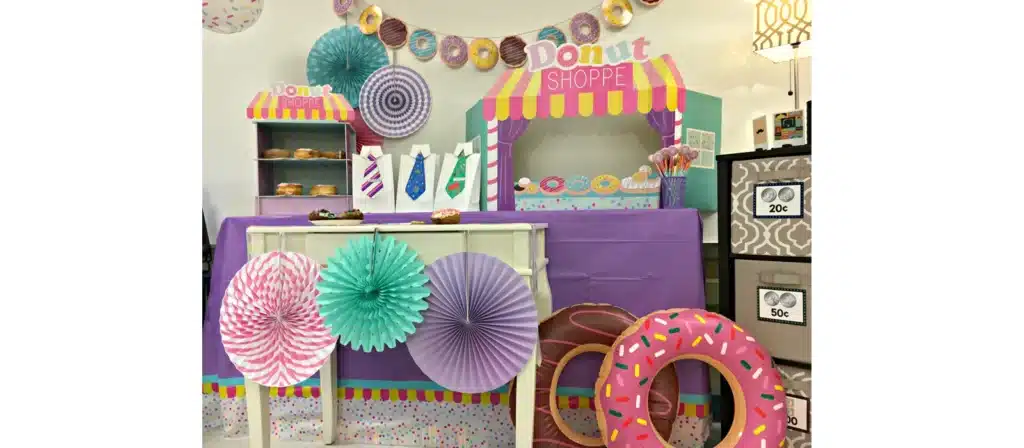
Sweeten the learning experience with a Donut Themes, where colors, shapes, and patterns come together in a deliciously creative way. This themes is perfect for introducing mathematical concepts like fractions, geometry, and counting in a fun, relatable manner. Decorations can include colorful donut cushions, posters with donut-themed alphabets, and a reading nook designed like a donut shop.
Beyond math, the Donut Themes can inspire lessons on nutrition, cooking, and the chemistry behind baking, making it a well-rounded educational treat. It’s a themes that combines learning with whimsy, proving that education can be as enjoyable as indulging in your favorite sweet treat.
11. Sports Classroom Themes
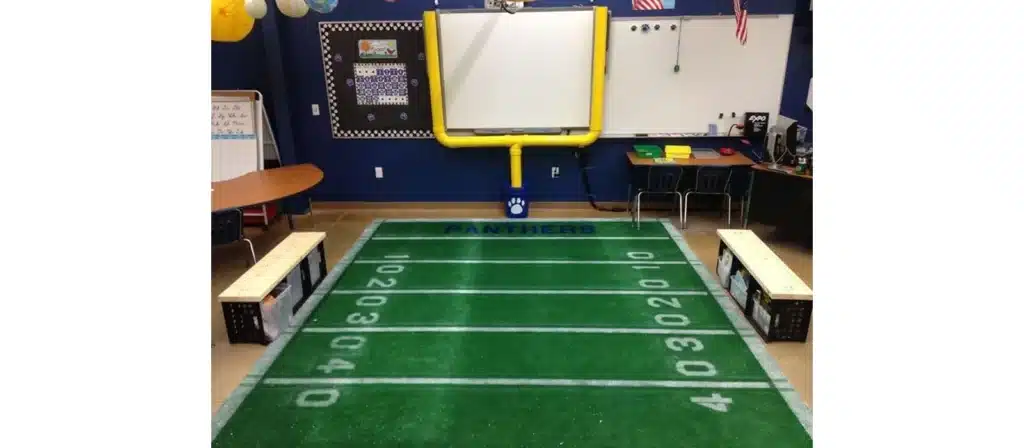
Foster teamwork, healthy competition, and physical wellness with a Sports Themes. This themes encourages children to explore various sports, understand the importance of physical activity, and learn about teamwork and sportsmanship.Train children in fine motor and gross motor skills.
12. Beach Classroom Themes
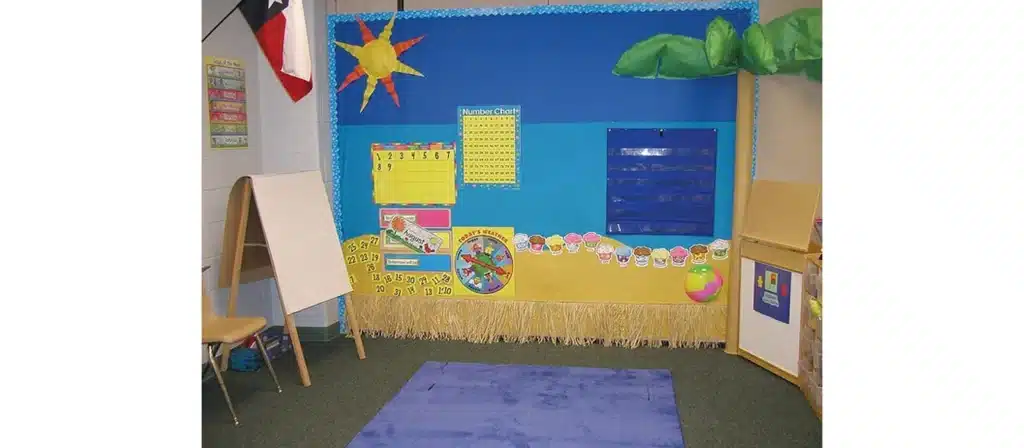
Bring the serenity and fun of the seaside into the classroom with a Beach Themes. This preschool classroom themes offers a relaxed yet educational environment where children can learn about marine life, ecosystems, and the importance of preserving our beaches and oceans. Sandboxes, ocean waves murals, and a classroom library filled with sea adventure books make learning an enjoyable beach getaway.
The Beach Themes is perfect for summer months or any time of the year, offering lessons in science, environmental education, and even art, as children create their own sea creature crafts. It’s a themes that combines learning with the calming influence of the beach, promoting relaxation and open-ended exploration.
13. Superhero Classroom Themes
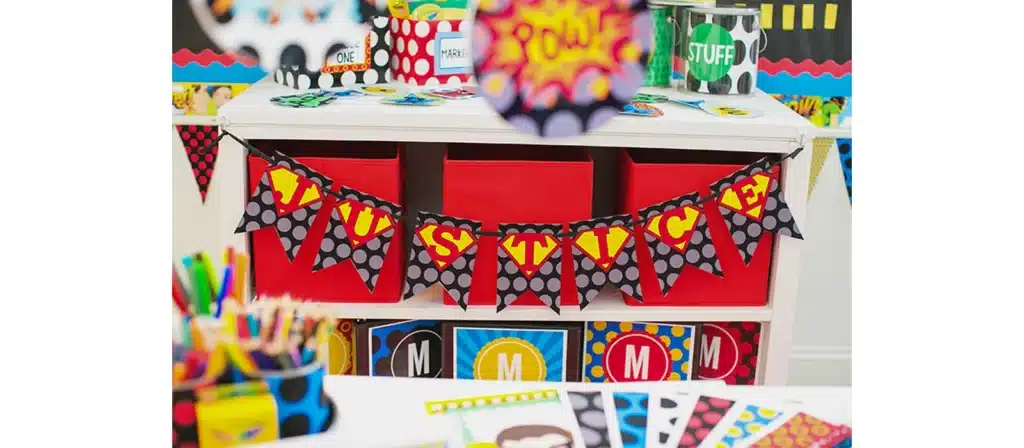
Empower young learners with a Superhero Themes, where every child can explore their own superpowers of kindness, courage, and intelligence. This themes is a fantastic way to discuss character education, focusing on virtues like honesty, perseverance, and helping others. Decorations can include superhero capes, posters of fictional heroes, and a “Hall of Heroes” featuring historical figures and community helpers.
14. Rainbow Classroom Themes
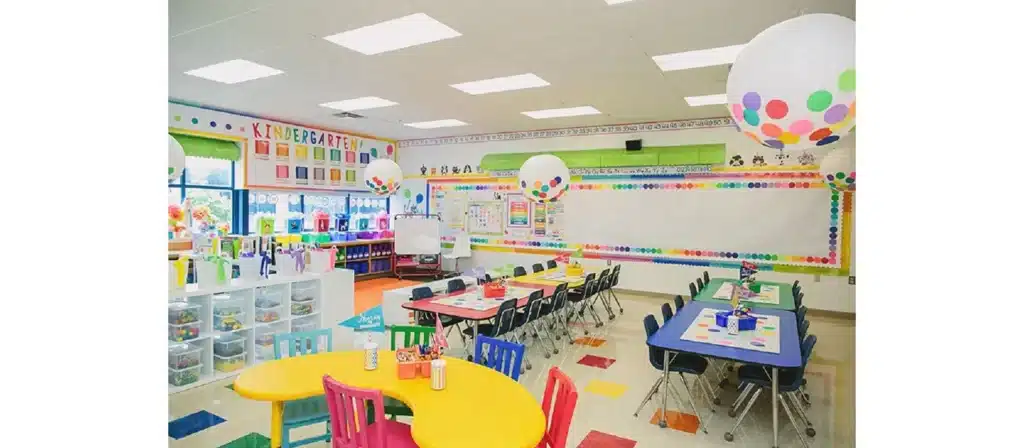
Illuminate the classroom with a Rainbow Themes, a celebration of colors, diversity, and the beauty of differences. This themes is perfect for teaching color recognition, weather phenomena like rainbows, and the importance of inclusion and diversity. Activities can include color mixing experiments, creating rainbow art, and reading stories that embrace diversity and acceptance.
The Rainbow Themes creates a vibrant, inclusive environment that encourages children to appreciate the beauty in themselves and others.
15. Garden Classroom Themes
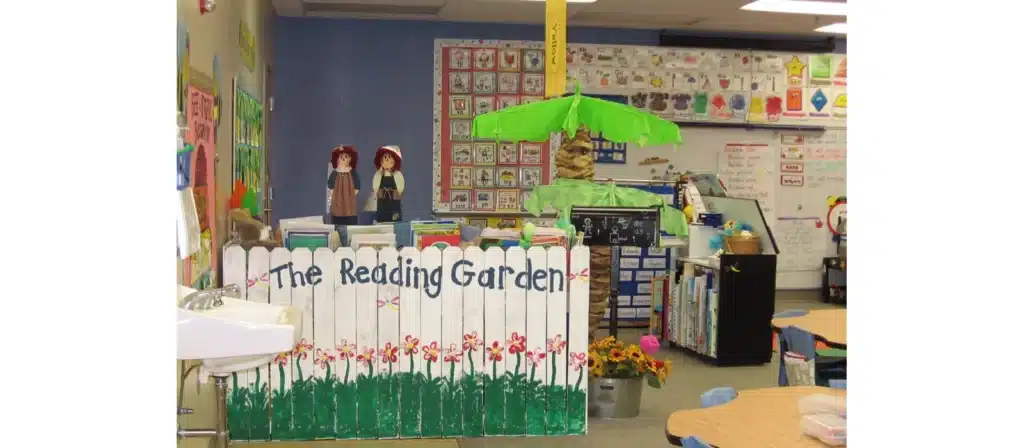
Cultivate a love for nature with a Garden Themes, where children can learn about plants, insects, and the ecosystem right in their classroom. This theme encourages hands-on learning through activities like planting seeds, studying plant growth, and observing insects. The classroom can be decorated with floral and garden motifs, creating a calming, nature-inspired environment.
The Garden Themes integrates science, math, and literacy, as children track the growth of their plants, count petals and leaves, and read stories about gardens and nature. It’s a theme that teaches patience, responsibility, and the wonder of life cycles.
16. Mathematics Classroom Themes
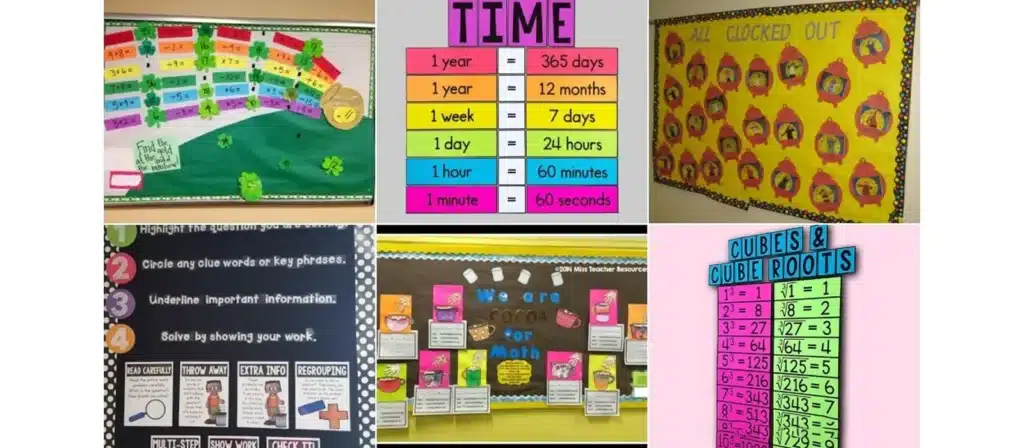
Transform the abstract world of numbers and shapes into a tangible, exciting adventure with a Mathematics Themes. This theme demystifies math by integrating it into everyday classroom activities, from counting games to shape-based art projects. Decorations can include number lines, geometric shapes on the walls, and math-related puzzles and games.
The Mathematics preschool classroom themes is designed to build a strong foundation in numeracy, encouraging problem-solving and logical thinking. It makes math accessible and fun.
17. Dinosaur Paradise Classroom Themes
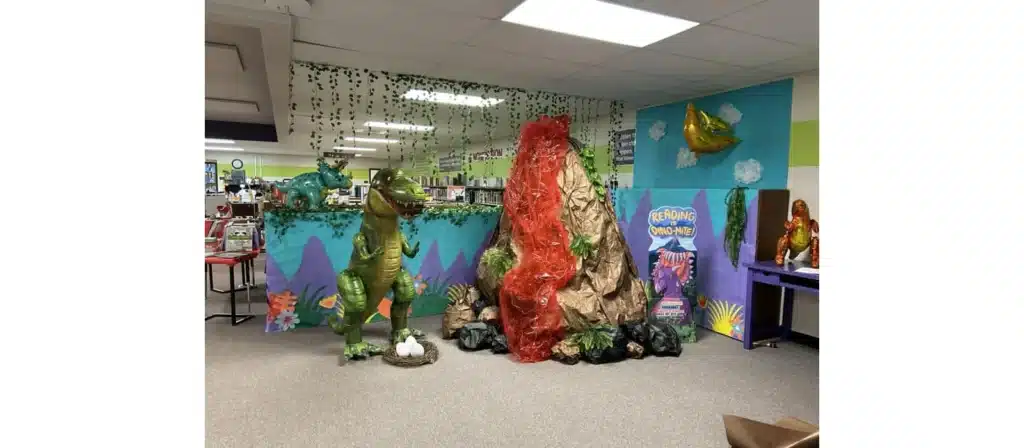
Step back in time to a world where dinosaurs roamed the Earth with a Dinosaur Paradise Themes. This theme is a favorite among young learners, sparking interest in history, science, and the mysteries of prehistoric life. Activities can include fossil digs, dinosaur model making, and learning about the different dinosaur species.
The Dinosaur Paradise Themes is an exciting way to introduce concepts of time, evolution, and scientific discovery. It encourages imagination, curiosity, and a sense of adventure, making it an unforgettable educational experience for preschoolers.
How can you effectively implement these themes in your classroom?
Creating a theme-based classroom involves more than just putting up decorations. It’s about integrating the themes into daily activities, lessons, and classroom materials. For instance, an ‘Under the Sea’ themes can include reading stories about sea creatures, science lessons on marine life, and art projects with ocean themes.
Furthermore, it’s important to consider the age group and interests of your students when selecting a themes. A preschool classroom themes that is too complex might not resonate with younger children, while something too simple might not engage older preschoolers.
Maintaining and Updating Your Preschool Classroom Themes
Keeping classroom topics fresh and engaging over time requires regular updating and adaptation. This not only maintains interest, but also adapts to changing educational goals and student needs.
Here are some tips to help you do just that:
- Rotate decorations:
Change decorations regularly to keep the themes visually interesting. Consider changing posters, banners, and wall displays to reflect different aspects of the themes throughout the year. - Involve students in the process:
Involving students in selecting, implementing, and updating themes can foster a sense of ownership and engagement. This collaborative approach can also provide valuable insights into what topics resonate best in the classroom. - Assessment and Adaptation:
Regularly assess the extent to which the themes is meeting educational and engagement goals. Student feedback and observations of classroom dynamics can inform necessary adaptations or accomplish themes changes. - Seasonal Adaptation:
Incorporate seasonal elements into your themes to keep it relevant and appealing. For example, if your themes is “Farm Life,” you can introduce activities and decorations related to planting and harvesting in the spring and fall. - Stay inspired:
Constantly seeking new ideas and inspiration for topics prevents stagnation. Professional development, collaboration with colleagues, and research can provide new perspectives and innovative approaches to teaching topics.
The Role of Teachers in Implementing and Maintaining Preschool Classroom Themes
Teachers play a key role in bringing classroom topics to life and ensuring their success. Their enthusiasm, creativity and commitment can transform a simple idea into a powerful tool for learning and development.
- Planning and Preparation: Teachers are responsible for selecting themes, planning activities, and gathering resources to support the selected themes. This includes conducting research, developing lesson plans, and ensuring that all materials are age-appropriate and aligned with the curriculum.
- Creativity and flexibility: Teacher creativity in designing and adapting themes can greatly enhance their appeal and educational value. Flexibility in responding to student responses and feedback is equally important in maintaining an engaging learning environment.
- Facilitation of learning: Teachers guide children through theme-related activities and experiences. They provide support, encouragement and opportunities for children to explore, inquire and make connections within the context of the themes.
- Assess progress: Teachers monitor and assess children’s progress, adapting activities and strategies to meet individual needs. They observe children’s participation, engagement, and understanding of the topic and make adjustments as needed.
Conclusion
Choosing the right themes for your preschool classroom is a vital step in creating an enriching environment for your students. By carefully selecting a theme that promotes learning, engagement, and creativity, you can provide your students with a foundation for success. Remember, the best themes is one that inspires both you and your students to explore and learn together.
For more details on preschool classroom themes, you can contact us and we can help you not only plan your classroom themes, but also help with classroom layout design!



